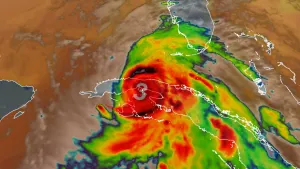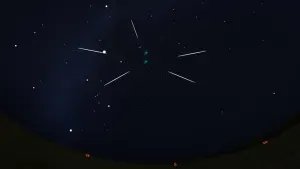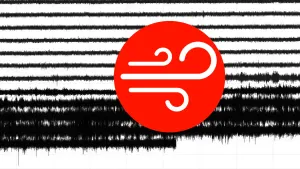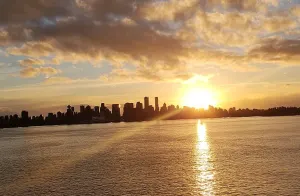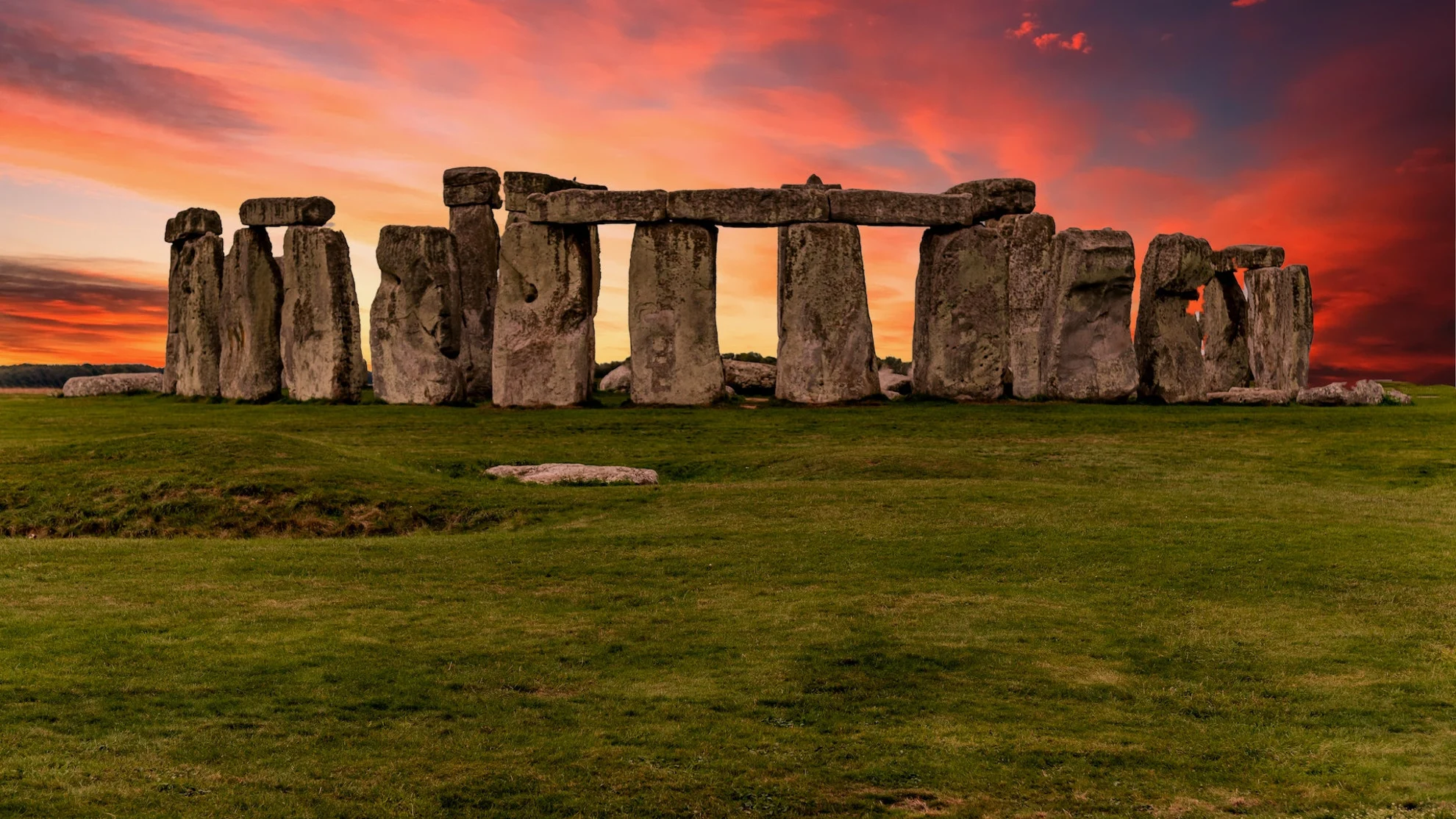
Summer Solstice 2024 is the earliest in over 200 years!
The longest day of the year is here, and it's the earliest
Thursday, June 20 is the official first day of northern astronomical summer for 2024 — Summer Solstice — which is the longest day of the year for this half of the planet.
Why is this day so special, though?
A solar 'pause'
'Solstice' comes from the word solstitium, which means "Sun stoppage" in Latin.
Each time the Sun crosses from horizon to horizon between the winter solstice and the summer solstice, it climbs a little bit higher in the sky. On the day of the summer solstice, its climb stops, as it reaches its highest point in the sky for the year.
After that, with each successive passage of the Sun through the sky, its path is a bit lower. This continues until the day of the winter solstice, at which point it 'pauses' again before it once again begins climbing higher in the sky.
The reason for this is the 23.4 degree tilt of Earth's axis.

A view of the equinoxes and solstices from space. (NASA)
According to retired NASA scientist Fred Espenak's Astropixels website, the official northern hemisphere summer 'pause' of the Sun in 2024 occurs on June 20, at 4:51 p.m. EDT.
Tracking the Sun
This day-to-day change in the Sun's position in the sky is best seen in solargraphs, like the one below.
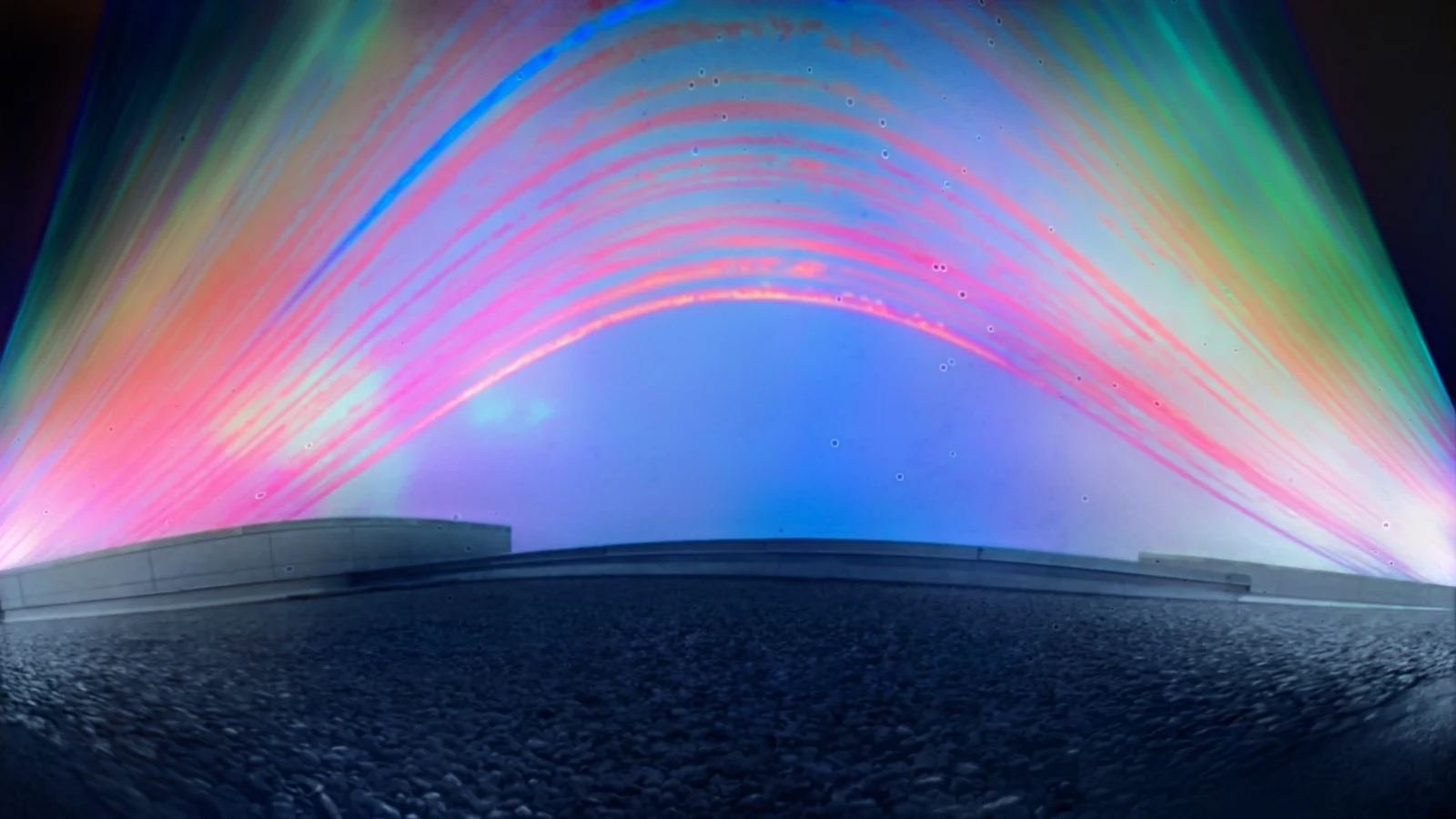
The Sun traces its way across the sky, lower and lower each day, between June 21 and December 20, 2023. (Bret Culp)
On the first day of summer 2023, award-winning photographer and VFX supervisor Bret Culp met with me at Weather Network headquarters, to place three small pinhole cameras on the roof of the building.
On each sunny or partly sunny day up until the winter solstice, an arching line was burned into the sheet of photographic paper inside each camera. Each line appears roughly one degree lower than the previous one, as it captures the daily change in the Sun's angle in the sky. Indirect light scattered from the surroundings was also collected over that six-month period, generating a long-exposure image of the environment as well.
"The colours are not direct depictions of the scene but a consequence of the paper's chemical reactions to extreme overexposure, the influence of uncontrollable factors such as moisture, dirt or fungus that may invade the camera, and excessive temperature fluctuations," Culp explains. Even the blue colour of the background is just a coincidence. "Additionally, each brand of photography paper has a unique chemical makeup, resulting in different colour schemes."
READ MORE: Solargraphy — The art, science, and chaos of capturing the Sun's path in the sky
What's behind this pattern?
The best way to see the reason for this pattern is to look at how our planet is oriented with respect to the solar system and the Sun.

(princessdlaf/Getty Images)
Globes are nearly always tilted to one side, to reflect the 23.4° tilt of Earth's axis, compared to the 'ecliptic plane' the planet traces out as it orbits the Sun.
This tilt is the reason for our seasons. When the Earth is on one side of the Sun, the planet's axis lines up with the axis of the Sun, with the north pole pointed more towards the Sun than the south pole. The northern hemisphere thus receives the most direct sunlight, and we mark the beginnings of northern summer and southern winter.
Watch below: Planetary scientist Dr James O'Donoghue traces Earth orbit through a full year of seasons
Around six months later, on the other side of the Sun, Earth's axis once again lines up with the Sun's axis, but with the south pole pointed more towards the Sun this time. This marks the beginning of southern summer and northern winter.
The longest day of the year
June 20 is the longest 'day' of 2024 in Canada — if by 'day' you mean the exact hours of sunlight we see.
Just how many hours of daylight you see on that day depends on where you live, or more specifically, how far north you are.
For example, Windsor, ON, gets a total of 15 hours, 16 minutes, and 40 seconds of daylight on the solstice. Sudbury, roughly 500 kilometres to the north, will see 15 hours, 49 minutes, and 35 seconds. Meanwhile, Iqaluit, over 2,500 km north of Windsor, will have 20 hours, 49 minutes, and 32 seconds of daylight.
Watch below: The view from space reveals the 24 hours of daylight at the Arctic
With the 23.4° tilt of Earth, the 'top' of the world, with respect to the Sun, is at around 66 degrees latitude, better known as the Arctic Circle.
Anyone north of that imaginary line during northern summer has a direct line of sight to the Sun 24 hours a day.
Wandering solstice
Solstices and equinoxes track precise astronomical moments. Each solstice is when the Sun's day-to-day change in position in our sky stops, and Earth's axis lines up perfectly with the Sun's axis. Each equinox is when the Sun appears directly over Earth's tilted equator.
These moments do not happen at the same time from year to year, though. Instead, the timing wanders, depending on exactly how long it takes for Earth to travel around the Sun that year.
However, it also follows a very specific pattern of change, due to a discrepancy between our calendar and the 'solar' or 'tropical' year.
A calendar year is typically 365 days long. A solar or tropical year is the time it takes for the Sun to go through its entire seasonal cycle from one vernal equinox to the next. On average, that equals 365 days, 5 hours, 48 minutes, and 46 seconds.
Since our calendar year stops short compared to the solar year, that extra time shows up as the equinoxes and solstices get later each year.
For example, the 2021 northern summer solstice occurred on June 20 at 11:32 p.m. EDT, then it was 5:13 a.m. EDT on June 21 in 2022, and 10:57 a.m. EDT on June 21, 2023. The solstice would have been at 4:51 p.m. EDT on June 21 this year, except 2024 is a leap year. With February 29 added to the calendar, that extra day pulls the solstice back to 4:51 p.m. EDT on June 20 instead.
Watch below: Why leap years? Dr James O'Donoghue demonstrates
It was the introduction of an extra day to our calendar every fourth year that helped us stay synched with the seasons.
However, since the difference between the calendar and solar years isn't exactly 6 hours, adding a full 24-hour day to each leap year actually overcompensates. For that reason, since the mid-1700s, we also purposely skipped a couple of leap year, which has (mostly) corrected the overcorrection.
The earliest Summer Solstice in 228 years!
Even with all of these corrections, overcorrections, and overcorrection-corrections, our calendar still remains slightly out of sync with the solar year. As a result, each leap year, the vernal equinox occurs around 40-50 minutes earlier than the previous leap year vernal equinox.
In 2024, this is resulting in something exceptional.
This year's vernal equinox occurred on March 19, at 11:06 p.m. EDT. It was only the second time that the equinox had fallen on March 19 in more than a century. In fact, it was the earliest spring equinox since 1896 — 128 years ago.
This year's summer solstice is also the earliest we've seen in a long time. However, we have to look back a lot further than 1896.
Even taking into consideration that there was no daylight saving time back then, 2024's summer solstice is still earlier. We actually have to go all the way back to 1796 — 228 years ago — to find an earlier summer solstice.
That year, it was on June 20, at 1:24 p.m. 'Local Mean Time'. Local Mean Time was in use before standard time was introduced in the late 1800s, and set local noon for each community based on when the Sun was highest in their sky. Although they don't match perfectly, LMT and EST/EDT are still close enough that it doesn't affect the comparison here.
Looking ahead, the 2024 autumnal equinox will also be the earliest we've seen since 1796, and the winter solstice will be the earliest since 1797. Additionally, each leap year after this — every 4th year from 2028 through 2096 — the timing of the equinoxes and solstices will get even earlier.
That means we'll have to look further back in history to find earlier ones, at least until we eventually arrive at the earliest equinoxes and solstices in the current era, in 1751 and 1752.
1752 was when the calendar went through a major shift, skipping over 11 full days in September of 1752, to correct 17 centuries of celestial drift and bring the equinoxes and solstices back into alignment with our calendar.

Once that was done, the Gregorian calendar then added in a correction to leap years to prevent that problem from recurring. After 1752, every year evenly divisible by 4 would be a leap year, except those years that are evenly divisible by 100, but not 400 (1800, 1900, 2100, 2200, 2300, etc.).
Day of celebrations
Every year on the summer solstice, thousands gather at Stonehenge, the ancient monument in Wiltshire, England, to watch the Sun rise.
Whether they're actual practitioners of Druidry or just there for the spectacle, attendees are treated to a sunrise that will line up exactly over the 'Heel Stone', as viewed from the centre of the monument.
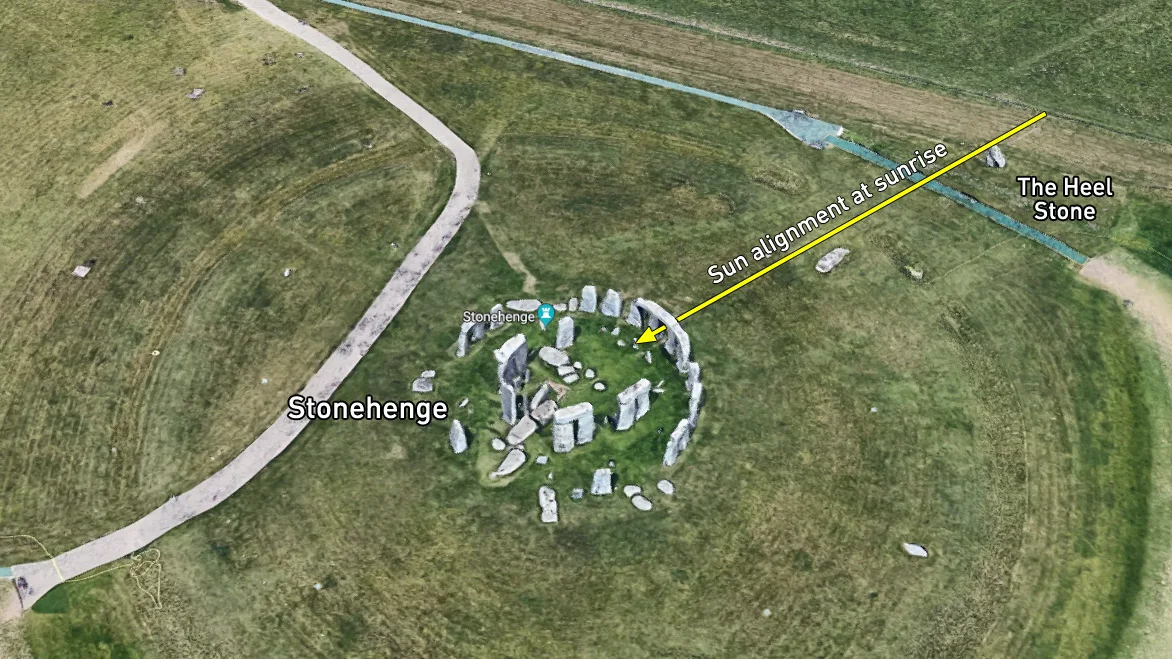
This image, screen-capped from Google Maps, shows the Stonehenge site, with an arrow indicating the alignment of the Sun on the morning of the June solstice. (Google/Scott Sutherland)
According to Frank Somers, from the Amesbury and Stonehenge Druids, celebrating the summer solstice at Stonehenge is about observing the cycles of nature.
"If you turn up at the changes between the seasons and observe that change," he told the International Business Times UK back in 2014, "you can become better attuned to those cycles in yourself, and you're a part of them."
In Sweden, the celebration of Midsummer, which occurs on June 22 this year, is one of the most important holidays of the year, on par with Christmas.
According to the website visitsweden.com: "The successful midsummer never-ending lunch party formula involves flowers in your hair, dancing around a pole, singing songs while drinking unsweetened, flavoured schnapps. And downing a whole load of pickled herring served with delightful new potatoes, chives and sour cream. All in all, a grand day out."
In Fairbanks, Alaska, residents usually mark the longest day of the year with the Midnight Sun Game.
While some baseball games are played as night games, the Midnight Sun Game has a whole different take on this concept. The first pitch of this game is thrown at 10 p.m., and the game typically lasts until 1 a.m. the next day. The big difference being, due to the amount of sunlight the area sees around the solstice, the Midnight Sun Game doesn't need a stadium with lights for the teams to play!
This year's game, on June 21, is the 119th Midnight Sun Game, with the Alaska Goldpanners set to play the Seattle Studs.
According to Explore Fairbanks: "The 'high noon at midnight' classic is played entirely without the use of artificial light. The Midnight Sun Game is a Fairbanks tradition that dates back to 1906 as a bar bet between the Eagle's Club and the California Bar, led by Eddie Stroecker, 'Father of the Midnight Sun Game.' Though the game is played through the hour of midnight, artificial lights are never used — and have never been used in the history of the event."
(Thumbnail image courtesy John Nail/Pexels)
(Editor's note: A previous version of this article stated that the 2024 Fall Equinox will be the earliest since 1797 and the 2024 Winter Solstice will be the earliest since 1798. However, this year's Fall Equinox will actually be the earliest since 1796 and the Winter Solstice will be the earliest since 1797. This has been corrected in the text above, and we apologize for any confusion.)







